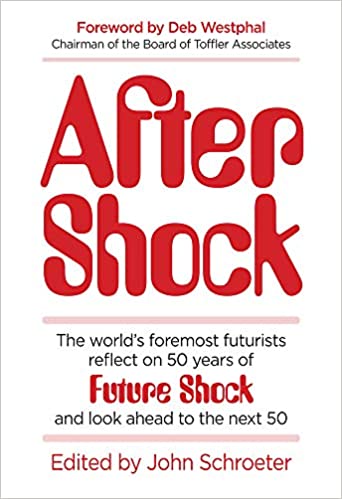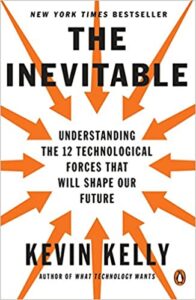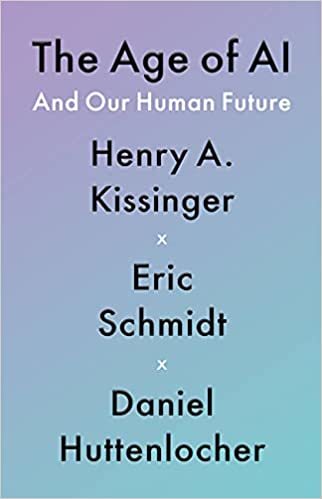Technology changes the way we learn in 2 fundamental ways:
- What We Learn
- How We Learn
Access to computers, networks, and sophisticated machinery is changing the way we interact with the world and revolutionizing how we learn.
Before digging into the two ways tech is changing the way we learn, it’s helpful to first understand why we learn. Revealing the core purpose for learning helps us relate to the massive changes technology is bringing to the learning process.
Why Do We Learn?
We learn to make our lives better.
Even though every person’s incentive for learning a particular skill is different, the core motivation is the same. We want to improve our lives. For most that means making our future better than our past. Learning helps us improve our lives in various ways. Here are a few examples:
Learn a new technical skill > get a better job > make more money > improve our quality of life
When we think about learning we most often default to learning a new technical skill that is needed to move up into a new, higher paying job. Training as a mechanical engineer will open up opportunities to work on machinery. Training as a doctor or nurse will allow you to qualify to work in health care.
Learn a new language > communicate with a different culture > open up opportunities > improve our quality of life
Learning soft skills like language or history is also a way for us to improve our quality of life. Acquiring more knowledge opens up new opportunities for us like meeting new people or becoming more “well-rounded” so others respect us more. All of these improve our self image and our quality of life.
Learn to juggle > impress friends or potential mates > raise social status > improve our quality of life
Even learning abstract and seemingly useless skills also contribute to improving our quality of life. Any new piece of knowledge or skill set that we acquire, no matter how small, can be used to impress another person and raise our social status. Moving up in social status is directly linked to our happiness and quality of life. We all want to be respected.

Learning is a form of work with the desired outcome of improving our lives.
The better we get at learning, the easier it will be for us to pick up new skills, and the quicker we can improve our lives.

It’s not just about how well or how fast you can learn something. It’s also about WHAT you learn. Not all skills are equal and technology is making this even more aparent.
What We Learn is Changing Rapidly
For almost all of human history, technical skills have been the most important things to learn for career advancement and upward mobility.
Advancements in tech are now changing this, flipping the old model of what skills are valuable onto its head.
One way to characterize this shift is to compare the past “old world” to the current “new world”. While the Old World is pre high-tech, the New World has technology integrated into it.
The Old World – A society built upon human labor.
- Man creates machines
- Man does most of the work but is aided by some machinery (hand-held plow > horse drawn plow > tractor)
- Machines can not function without being operated by man
Example: Over the last six thousand years, farming has progressed from the hand-held plow to the horse-drawn plow, to the human-driven tractor. Each innovation has slowly changed the skill set of the farmer and reduced the amount of farmers needed to work a given plot of land. But humans were still required to do the majority of the work. As we transition into the new world this will change dramatically. Automated tractors and harvesting machines are now deployed (part of the New World) and will drastically change the role of the “farmer” like never seen before.
Fully automated farming has already been operational since 2017.
The New World – Automated machinery and artificial intelligence do most of the work.
- Machines are 99% automated in their work
- Man’s main role is to teach, coordinate, and deploy machines who will do the rest
This transition is happening across almost every industry. Some locations will transition faster than others. Some professions will evolve faster than others. Almost no professions will go unchanged by technology in the next 20 years.
What does this transition mean for the future of learning?
If you learned how to drive a tractor in the early 1900’s you’d have a good opportunity for work. Operating large machinery was a unique skill set because at that time plowing tractors were a novel technology. It wasn’t a trivial skill at the time and not many people could do it.
By the year 2000, the value of learning to operate a large tractor for farming had significantly decreased. Tractors became more common and technology made them simpler and easier to operate.
Now, fully-automated tractors are being deployed.
In the last 120 years the value of learning how to operate a tractor has gone from very high to very low. This simple example shows how technology changes the value of what skills we learn.
Those of us who still have the mindset that Old World technical skills will help us attain a secure income in the New World, are headed for a rude awakening.
And it’s coming faster than you may think…
The rate of change is increasing, meaning every year the pace of technology gets faster. As Moore’s law states, computing power doubles every two years. This has proven true thus far.

This fast-paced change means the skills that were valuable to learn in the past are not the same ones that will be valuable in the future.
Learning to prosper in the New World
If you want to prosper in the New World, you need to learn New World skills.
What are the skills of the New World? Let’s go over some examples from the Old World vs the New World.
These Old World skills are losing value:
Memory Recall – In the Old World access to information was scarce. This made the ability to remember facts, locations, and key dates a desirable skill. In the New World, a smart phone makes all of that information available to you in seconds.
Technical Skills (Physical) – A welder, mechanic, or truck operator used to be considered good paying professions. Now these largely repetitive tasks are being automated and replaced by robots.
These New World skills are gaining value:
Meta Learning – Since the rate of change in our society is increasing, there is a much higher need for adapting (aka learning new things quickly): new technologies, new concepts, and new ways of thinking. If you are good at learning, you’ll be able to pick up new things quickly and adapt faster than others, making you more valuable to any company or project operating in the New World.
Coordinating and Problem Solving – Bringing together various people, projects, or entities and finding synergies between them is a skill that will elude AI for many years to come. While repetitive tasks like assembly line work will be replaced rather easily, people who can take various inputs, evaluate options based on a desired outcome, and present possible solutions, will become more and more valuable.
Empathizing and Communicating – Similar to coordinating and problem solving, the ability to communicate effectively is not something that will be easily replaced. While technologies like Zoom make it easier to connect people, it isn’t easy to automate empathy and human communication. For example, while a husband and wife may be able to call each other from opposite ends of the world, that alone won’t solve their marital problems. A counselor who joins the call, however, is much more likely to help facilitate a productive conversation.
These are just a few examples of how we need to adapt our thinking about what skills to learn for the New World.

Old World skills are losing value because the demand for them is going down. As more jobs are replaced by automation, less specialists with technical skills (especially those that are repetitive) are needed.
New World skills like meta learning and problem solving are increasing in demand because these are skill sets that are much more difficult to replace with technology.
How We Learn is Changing Rapidly
The shift in how valuable certain skills are is not the only change to learning we are seeing.
The method by which we learn new skills is also changing. How we learn skills in the New World is leaving Old World learning in the dust. Here are the biggest changes already taking place:
Mediums for Learning
The ways by which information is stored, accessed, and how we interact with it significantly changes how we learn. The New World trend is a move away from static sources of information and toward dynamic information.
Static sources of learning materials offer a one-size-fits-all information source. The flow of information isn’t easy to throttle for different types of students. This includes books, lectures, and even many forms of audio and video. The information is a one-way flow, making it difficult to adapt to the various learning styles students have. This means some students are bored because it’s too slow, some are frustrated and lost because it’s too fast, and for only a small group it’s just right.
Dynamic learning materials adapt to each student, customizing the learning experience, and thus making it much more effective. Dynamic materials make it easier for us to:
- adjust the pace of our learning to meet our needs
- incorporate reviews and refreshes of old information exactly when we need it
- capitalize on the type of learning that fits our personality best (audio learners, visual learners, etc.)
Dynamic learning materials will incorporate interactive and AI-enabled learning games, virtual teachers, and even robots for hands on skills training.
Dynamic learning far exceeds static learning because it allows us to customize learning in real time, reducing periods of feeling too far ahead or too far behind. In addition, dynamic learning methods learn us… allowing them to introduce materials in a way it knows we can absorb.
The Timing of Learning
We’re moving away from “just in case” information and toward “just in time information”. It is becoming less valuable to store a wealth of information in your head and more valuable to learn the technology that allows us to access wisdom of the crowds.
We’ll have to learn new things quickly and forget them just as fast.
Skilled workers will be required to remember less critical information and instead have the skill to access and apply information. We’ve seen this already in most industries. For example, stores no longer require a clerk to remember the price of an item or even look at a group of items and tally up the price. Now in many supermarkets, shoppers scan their own items and a clerk is just there to verify or query the product database for any unusual cases.
This transition to using a machine interface to access information at the point it is needed, will continue to move into most other industries. A digital assistant will do the majority of the heavy lifting. In many cases this will be processing thousands or hundreds of thousands of data points to help you answer a question.
Our Relationship with Learning
Finally, we’ll need to re-evaluate our relationship to learning. Knowledge has historically been held and disseminated by large institutions (The Chief or Prophet Teller, The Church, The King, The University). In the New World knowledge is accessible to everyone and free (or very affordable). In the New World your qualifications are based more on your past work experience and less on a degree granted by an entity.
It will be clear in a matter of minutes into a work trial, whether or not you’re qualified for a job. Either you can interface with the environment and solve problems that arise, or you can’t. Trying to apply an Old World skill set to a New World job will fail miserably and quickly.
Another way of putting it: Old World learning is mostly memory recall. A problem arises and you remember the answer from your studies or from a past experience. The New World is more dynamic. As problems arise you need to learn how to solve them on your feet and use the tech tools at hand, rather than just apply a ready-made solution.
Are you applying Old World learning to the New World?
Final Considerations on How The Change in Learning Affects Us
Trying to decide what to learn? Ask yourself, “is this a skill that can be applied to various different work and life situations?”
- How repetitive is the application of this new skill?
- How straightforward are the steps to learning? (is it a clear path with defined steps, or more of a dynamic and adaptive learning approach)
- If the current application of the skill set I’m learning changes unexpectedly, how transferable will my skills be to something else?
In a fast changing and unpredictable future, keep a closer eye on the principles that will transcend time than the hard skill sets that may be popular now (and forgotten tomorrow).
Important things to keep in mind
- The transition from the Old World to the New World will happen unevenly. This means many jobs will persist in the old model and old ways of learning will still fit those. However, it’s not a safe strategy to rely on trying to maintain an old way of learning during this transition.
- Popular technology products might fade away, but their predecessors will follow closely behind them. We haven’t covered some recent breakthroughs in brain interfacing, virtual reality, or augmented reality technologies in this post. We believe its more valuable to explore the underlying trends rather than specific products.
Digging Deeper: Additional Resources On The Future of Learning
Books
After Shock: The world’s foremost futurists reflect on 50 years of Future Shock and look ahead to the next 50 years by multiple authors
This is probably the most well-rounded book about the future you will find. It is comprised of various essays from more than 100 of the world’s leading futurists.
The Inevitable by Kevin Kelly
Published in 2017, this overview of the 12 technology trends that will shape our future is still relevant. Rather than discuss cool new gadgets, this book covers trends in tech that are already in motion.
Kevin Kelly is the founder of Wired magazine and is widely regarded as one of the leading futurists alive today.
The Age of AI And Our Human Future – Multiple Authors
This book is co-authored by:
- Henry A. Kissinger
- Eric Schmidt
- Daniel Huttenlocher
This well-rounded account of current AI capabilities and what we can expect to come will give you a rare view into the future.
Podcasts
A Glimpse Into The Future – Ted Radio Hour – This amalgamation of various futuristic TED Talks provides a look into how tech will change the future with several specific case studies.
Eric Schmidt — The Promises and Perils of AI, the Future of Warfare, Profound Revolutions on the Horizon, and Exploring the Meaning of Life – From the Tim Ferriss Podcast, this interview covers much of what is in Eric Schmidt’s book (mentioned above). As the former CEO of Google for 10 years, Eric Schmidt has unique insights into the future of tech.


